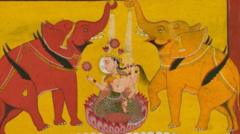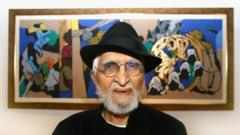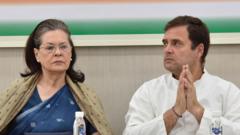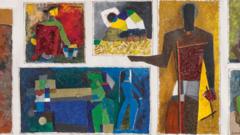The Delhi Art Gallery is caught in a legal controversy after a court ordered the seizure of controversial MF Husain paintings, allegedly depicting Hindu deities in a provocative manner. This incident raises questions around the limits of artistic freedom in India, as the artist’s legacy continues to evoke polarized opinions.
Controversy Erupts Over MF Husain's Art Amid Court Rulings in India
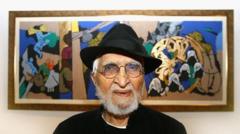
Controversy Erupts Over MF Husain's Art Amid Court Rulings in India
A Delhi court has ordered the seizure of paintings by renowned artist MF Husain that allegedly offend religious sentiments. The decision reignites a long-standing debate over artistic expression in India.
In a significant ruling, a court in Delhi has instructed the seizure of two paintings by MF Husain, a prominent Indian artist whose works have repeatedly drawn controversy. This decision comes in response to a complaint alleging that the displayed artworks, which feature depictions of Hindu deities, "hurt religious sentiments." The complaint was made by Amita Sachdeva, a lawyer, who, after photographing the paintings at the Delhi Art Gallery (DAG), filed a police report citing previous offenses linked to the late artist’s work.
The exhibit in question, titled "Husain: The Timeless Modernist," features over 100 works and is ongoing at DAG until mid-December. Following the complaint, the gallery is reportedly seeking legal advice and maintains that it is not directly involved in the legal proceedings. Interestingly, during a visit with an investigating officer, Sachdeva found that the controversial works had seemingly been removed from the exhibit.
Husain, who passed away in 2011 at the age of 95, frequently faced backlash for including nudity in his portrayals of Hindu deities—a practice that ignited fierce reactions from certain groups. His prior works, including a contentious portrayal of a nude figure representing the nation, have led to significant legal and personal ramifications. In 2006, he left India amid threats stemming from his artistic expressions.
Notably, India's Supreme Court has previously defended Husain's art, asserting that nudity in Indian culture is not inherently obscene and critiquing the rise of "new puritanism." The court highlighted that art forms often reflect historical and cultural contexts, questioning the consistency of legal challenges against artistic representations.
Recently, in another incident, the Bombay High Court rebuked the customs department for seizing works by other Indian artists deemed as "obscene." The discussion surrounding the limits of artistic freedom continues to intensify, prompting a national dialogue about the right balance between respect for religious sentiments and the importance of artistic expression.
As the legal situation unfolds in relation to Husain's art, it signals a critical moment for India's cultural landscape, raising familiar debates about freedom of expression versus public sentiment that resonate across global contexts.



